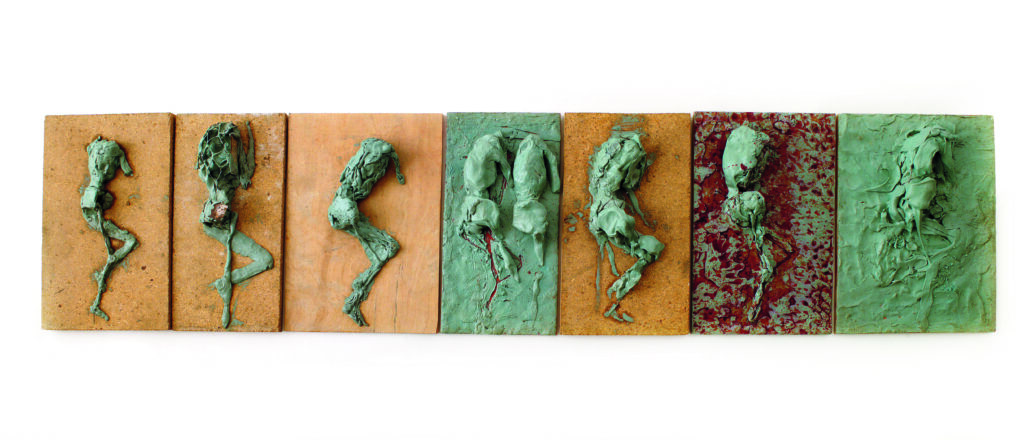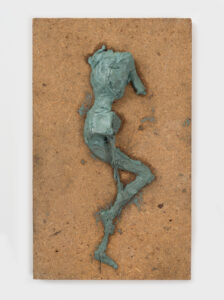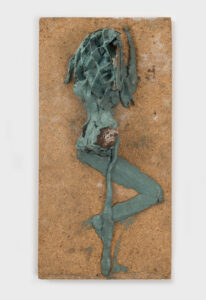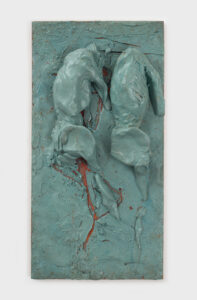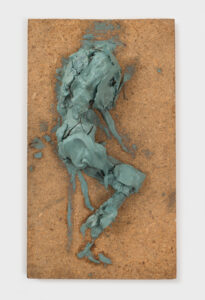NUDE STUDIES
________________________________________________________________________________________________________________________________________________________________________________
TECHNICAL DETAILS
Seven sculptures from wire and modelling clay fastened to the bed of plywood or chipboard.
Dimensions:
30 x 22 x 0.7 cm (sculpture height with board 6 cm), plywood
30 x 19 x 0.7 cm (sculpture height with board 6 cm), plywood
29.5 x 17 x 1.7 cm (sculpture height with board 8 cm), chipboard
29.5 x 20,5 x 0.7 cm (sculpture height with board 6 cm), plywood
29.5 x 15 x 0.7 cm (sculpture height with board 6 cm), plywood
29.5 x 15 x 1.5 cm (sculpture height with board 6.5 cm), chipboard
29.5 x 18 x 1.6 cm (sculpture height with board 6 cm), chipboard
- ________________________________________________________________________________________________________________________________________________________________________________
-
- Nude studies, photo Bartosz Górka
- ________________________________________________________________________________________________________________________________________________________________________________
- DEMO
- ________________________________________________________________________________________________________________________________________________________________________________
-
DESCRIPTION
-
The work dates back to the period when Katarzyna Kozyra was a student of the Warsaw Academy of Fine Arts. In Polish art schools it is a tradition to work with models and draw, paint or sculpt nudes. Kozyra’s origins are in the sculpture atelier. At first she would make traditional nude sculptures of young men, proportioned perfectly, like Greek gods, or models cut out from anatomy books. However, at the beginning of the 90s she became interested in deformed female body. It was certainly influenced by personal experiences of the artist who had suffered from eating disorders, first anorexia, then bulimia, for many years.“I became anorexic at the age of around thirteen or fourteen, after my parents ordered a two-week egg diet. I discovered that hunger is interesting. Then I became bulimic and I forced myself to throw up after eating for nearly sixteen years.” Kozyra befriended a girl who, like her, was an anorexic. The artist worked with Dorota in the third year of her studies, for about 2 months; no one else wanted to sculpt her. This is how a series of sculptures “Nude Studies” came to be: a nude of an anorexic girl, made out of wire and modelling clay on chipboard or plywood. The use of such an unconventional material as modelling clay was also supposed to reflect the uniqueness of the model herself. These studies are radical departure from classical, statuesque representations of virile men, or depictions of women in erotic, yet innocent elation, with perfect bodies and ideal proportions. The body of an anorexic is weak, ephemeral, repulsive, fragile, twisted and huddled, and in Kozyra’s representation – headless.
- ________________________________________________________________________________________________________________________________________________________________________________
-
- Nude studies
- Nude studies
- Nude studies
- Nude studies
- Nude studies
- Nude studies
- Nude studies
- ________________________________________________________________________________________________________________________________________________________________________________
- ADDITIONAL INFORMATION
-
Kozyra unofficially dubbed this piece “Anorexic girls” or “Plasticine girls”.
-
Several years after the sculptures had been made, Kozyra learned that her model, Dorota, passed away – she starved herself to death.
-
It is not the only project in which the artist alludes to her illness: see “Olympia” .
- ________________________________________________________________________________________________________________________________________________________________________________
- SEE MORE
- ________________________________________________________________________________________________________________________________________________________________________________
-
The Artist would like to thank all her collaborators and people who helped in the realisation of the project, in particular:
Dorota, Jacek Markiewicz, Grzegorz Kowalski.
The piece was created with the support of Kozyra’s mother, Alicja.

